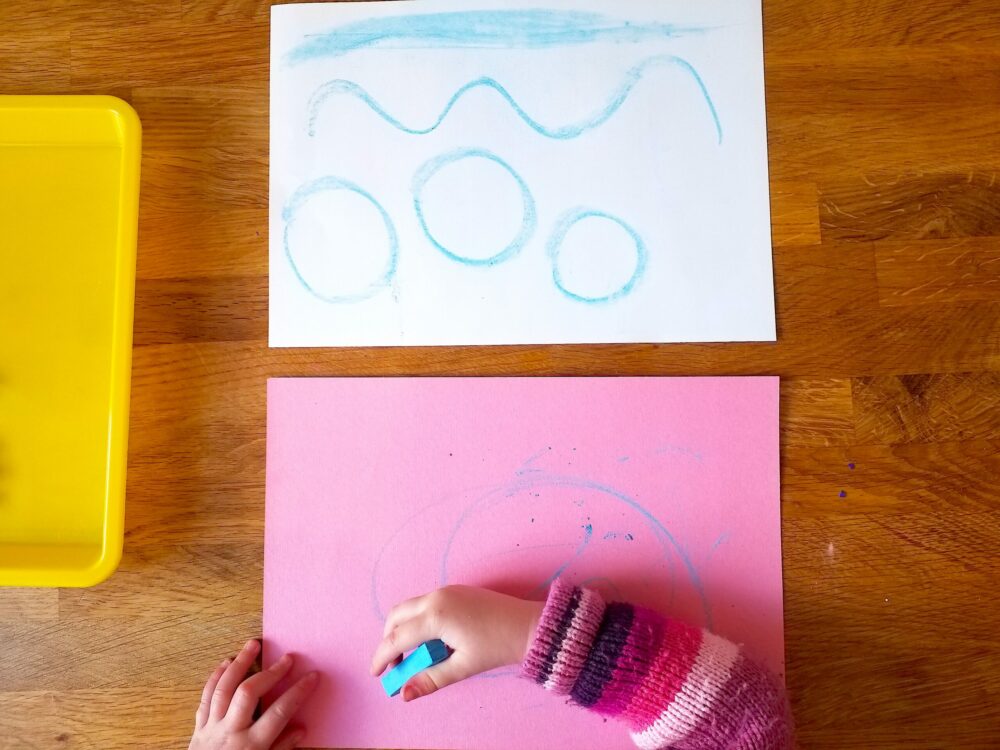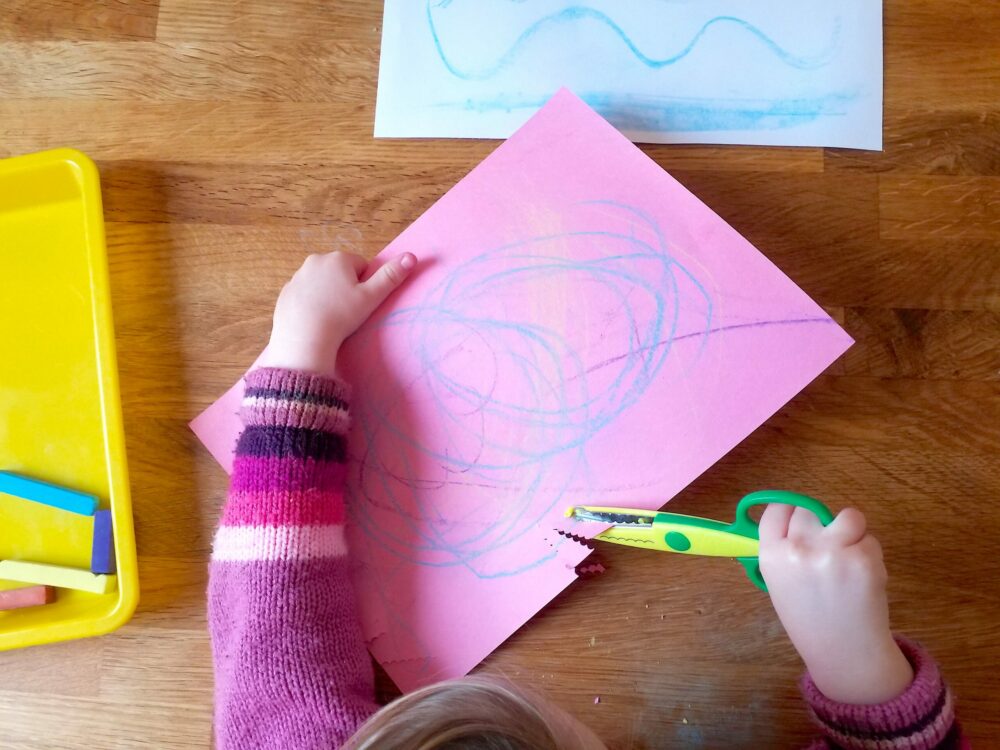Angry Cat, Calm Cat
By Hannah Moshtael.
In this post, Early Years educator Hannah Moshtael uses children’s picture book Mog’s Box, written by Helen Nicoll and illustrated by Jan Pienkowski as a starting point to support emotional development and recognition in young children. Pienkowski’s illustrations are used to help children understand and express their emotions using shapes, textures and a limited colour palette. Through experimenting with different materials, the outcome of the activity is to create a collaged ‘Angry Cat’ face and a ‘Calm Cat’ face using assorted fabric and paper.
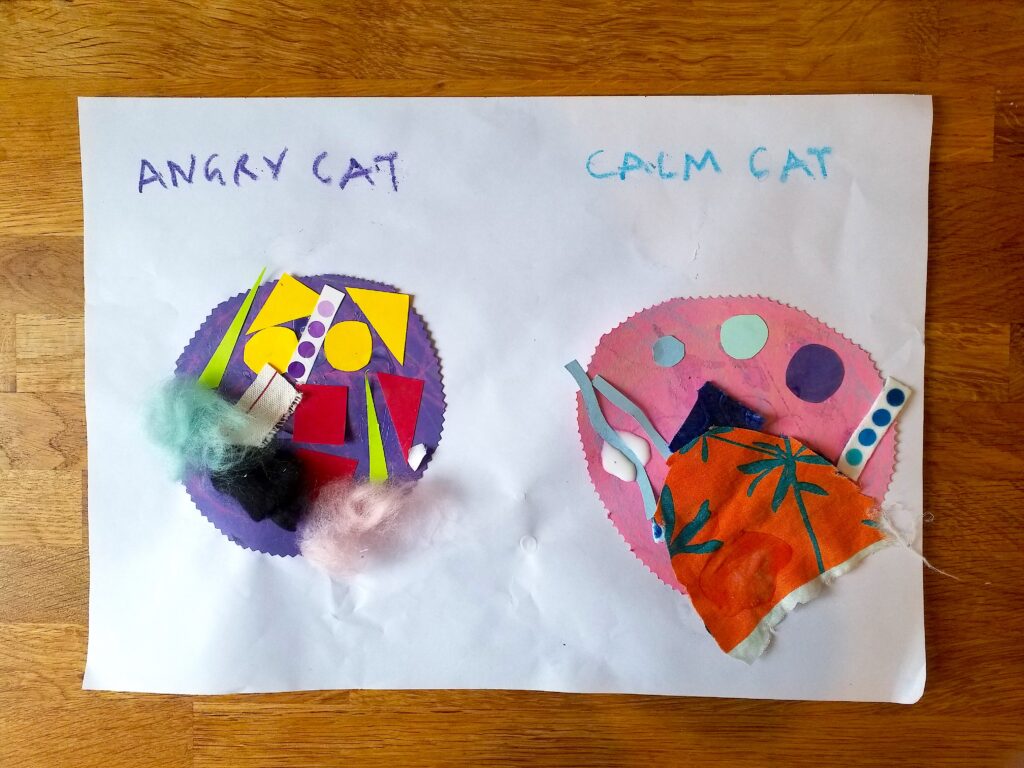
The suggested age range for this activity is 3-5 years old. The activity takes approximately two hours, including time for reading and discussion at the start, some materials exploration, and then making two cat faces. You might choose to take a break in between making each face. This can help to focus children as well as giving them time to discuss and compare the difference between angry and calm cat.
To extend the learning, the work of early abstract artists such as Joan Miró and Wassily Kandinsky might also be helpful to look at for further exploration of shape, colour and emotion.
Materials needed:
- A copy of the picture book Mog’s Box (Helen Nicoll & Jan Pienkowski) to read with the children. You might want some extra copies of the book for reference or photocopies of pages 3-4, page 5 and pages 25-26, depending on the number of participants
- 1 A3 sheet of white paper per child
- 2 A4 sheets of coloured paper per child (have bold, bright colours available for Angry Cat, and pastel colours for Calm Cat)
- Some scraps of faux fur for observational drawing
- A few extra sheets of A4 coloured paper for each child to experiment with mark making and for creating fur textures
- Soft pastels
- Thick playground chalks
- PVA glue
- Glue spreaders
- Child-friendly scissors with a choice of serrated edges (such as zig-zag, wavy and straight cutting designs)
- A selection of small shapes that you’ve cut out of coloured paper
- Small scraps of fabric and paper with contrasting textures (or you can buy fabric and wallpaper sample packs online from companies such as Spoonflower).
To begin:
I carried out this workshop at home with my three year old. We started the session by reading Mog’s Box together. In this picture book, Pienkowski’s illustrations humorously tell the story of Mog the cat’s emotional journey, alongside Nicoll’s text.
As Mog watches Meg (his witch owner) making a daily school packed lunch for Owl, he becomes increasingly jealous and angry. He ends up screaming with rage and demanding his own packed lunch. Meg gives in and casts a spell to make another lunchbox, which doesn’t work quite as Mog had hoped. The box has a big, hairy, live caterpillar inside. Mog is horrified at first but eventually calms down as he watches the caterpillar gradually turn into a butterfly.
As we read, we took time to pause on the pictures that my daughter commented on or laughed at, and we talked about them. She pointed out the panel image sequence of Mog getting more and more jealous every day (pages 3-4). When Mog finally loses his temper, his body becomes spiky and his mouth and eyes get bigger (page 5). When he calms down and has some tea and cakes with his family, he becomes round and smooth again (pages 25-26).
To explore how an ‘angry cat’ looks, I asked, ‘Which colours do you think are angry colours?’. We looked again at the colours in the Angry Mog illustration (pink, black, red, green) and chose a bright pink piece of paper to draw on.
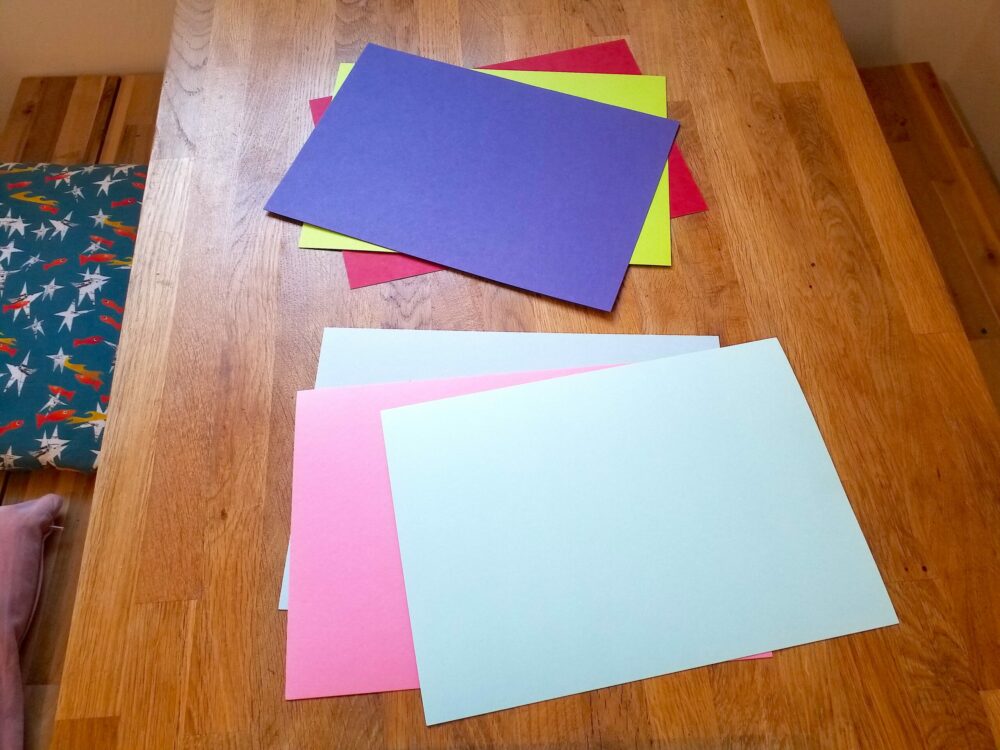
Then, looking more closely at the illustration and a sheet of ‘angry lines’ that I had drawn, my daughter made her own ‘angry marks’ on the paper.
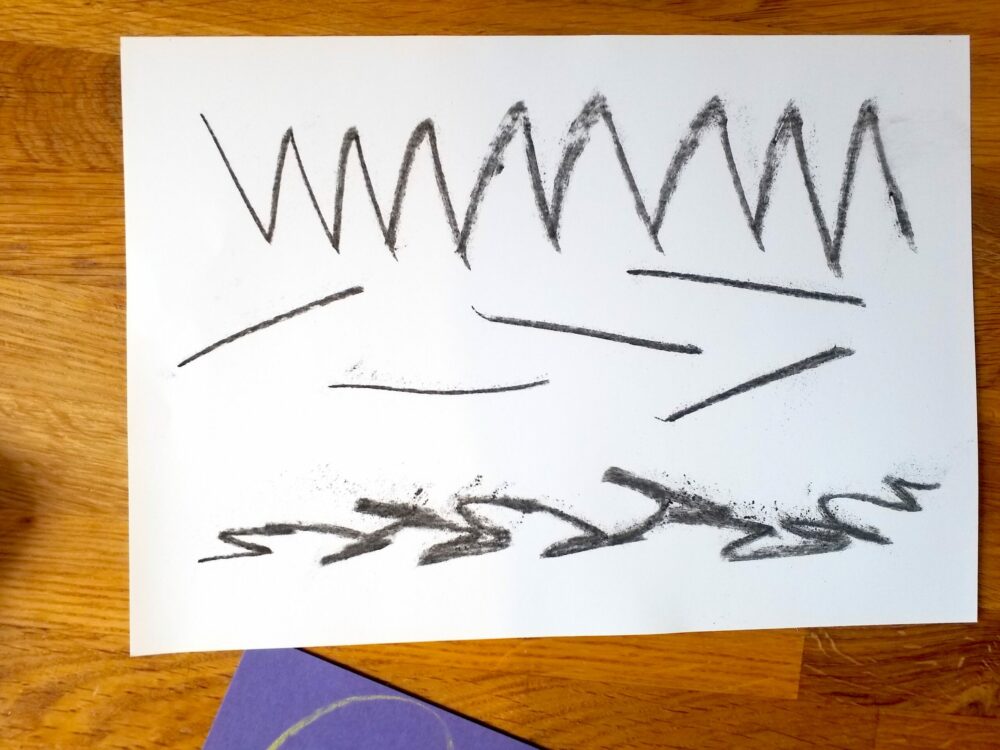
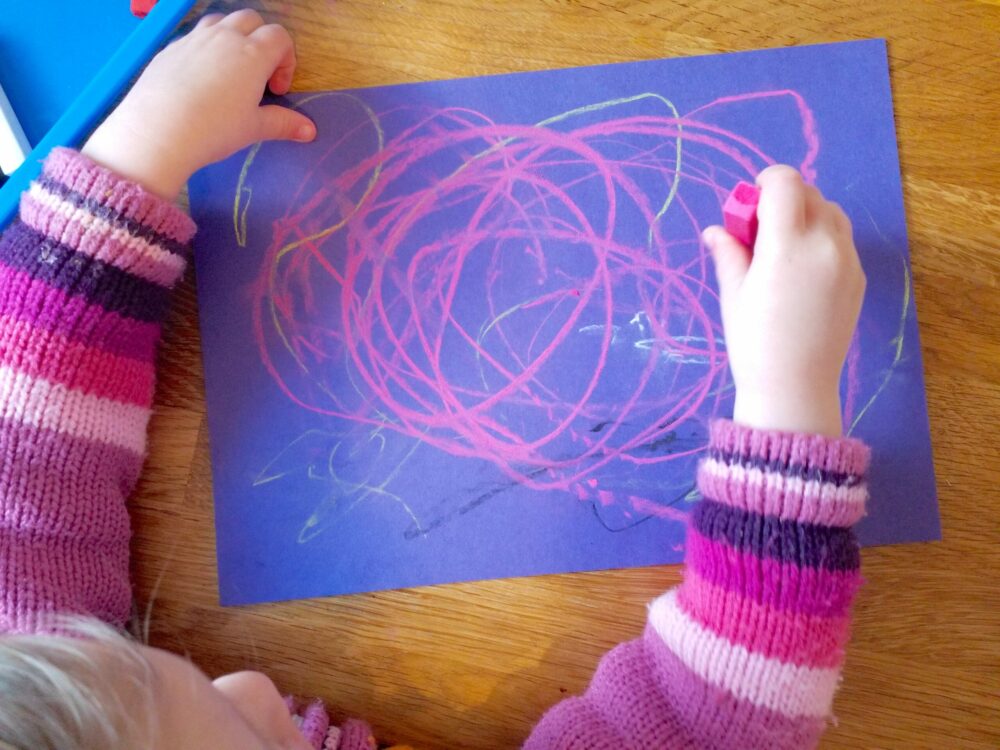
To create a textured drawing of Angry Cat’s fur on a sheet of green paper, we used dry pastels and the side of thick playground chalks. For this, you can use samples of faux fur from craft shops for the children to observe.
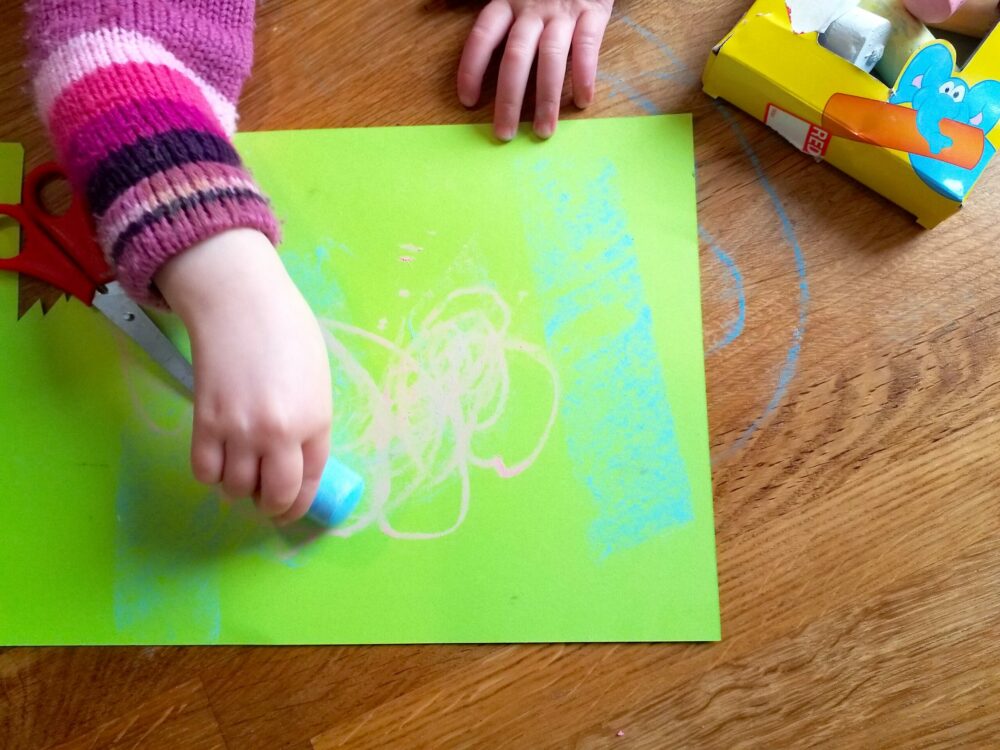
Next, my daughter drew a big circle over the ‘angry marks’ drawing, to make Angry Cat’s face. We cut this out using zig-zag perforated edge scissors and glued it on a white sheet of A3 paper.
I showed my daughter the Angry Mog illustration again, and asked her ‘Which shapes can you see in this picture?’. The sharp triangles that make up Mog’s eyes, teeth and fur seemed like particularly angry shapes, so we cut up the textured fur drawing into triangles. We also looked at small pre-cut paper shapes and talked about which ones looked the most angry. My daughter chose shapes to represent eyes, a nose, mouth and whiskers, and glued them onto Angry Cat’s face.
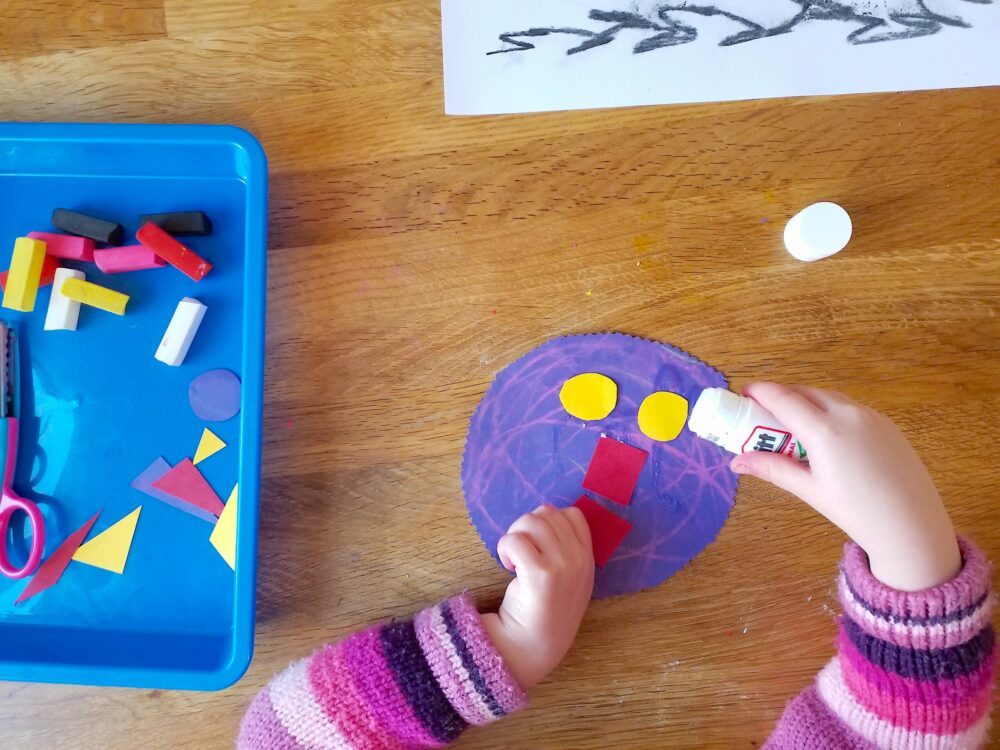
We explored fabrics and papers with varying textures to add more fur. I asked ‘How does this feel? ‘Does it feel angry or calm?’. In this way, we compared ‘angry’ rough scraps and ‘calm’ soft scraps.
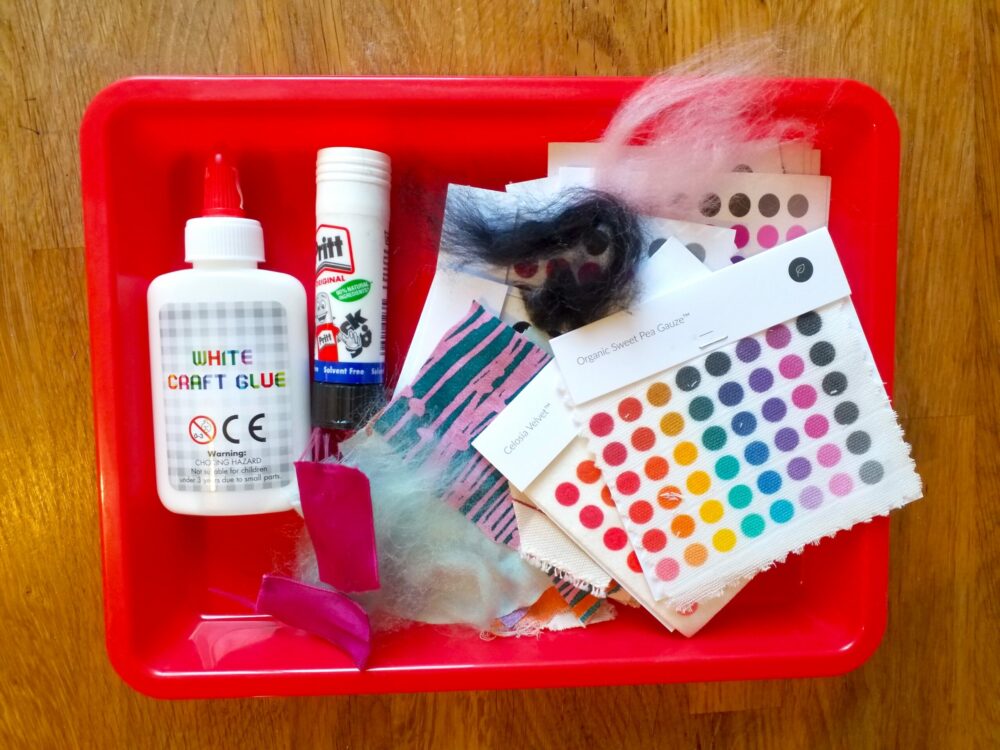
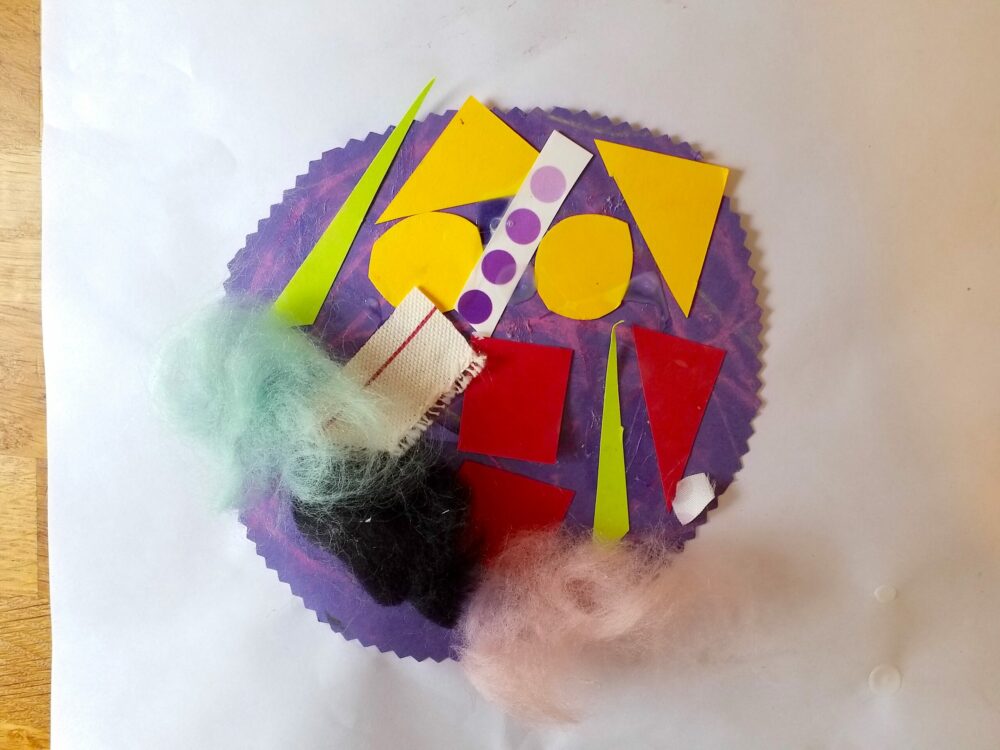
We carried out the same process to make a contrasting ‘Calm Cat’. We made smoother, curved ‘calm’ marks, followed by creating a softer cat fur textured drawing. We cut out a face and shapes from these expressive drawings and glued on ‘calm’ material scraps.
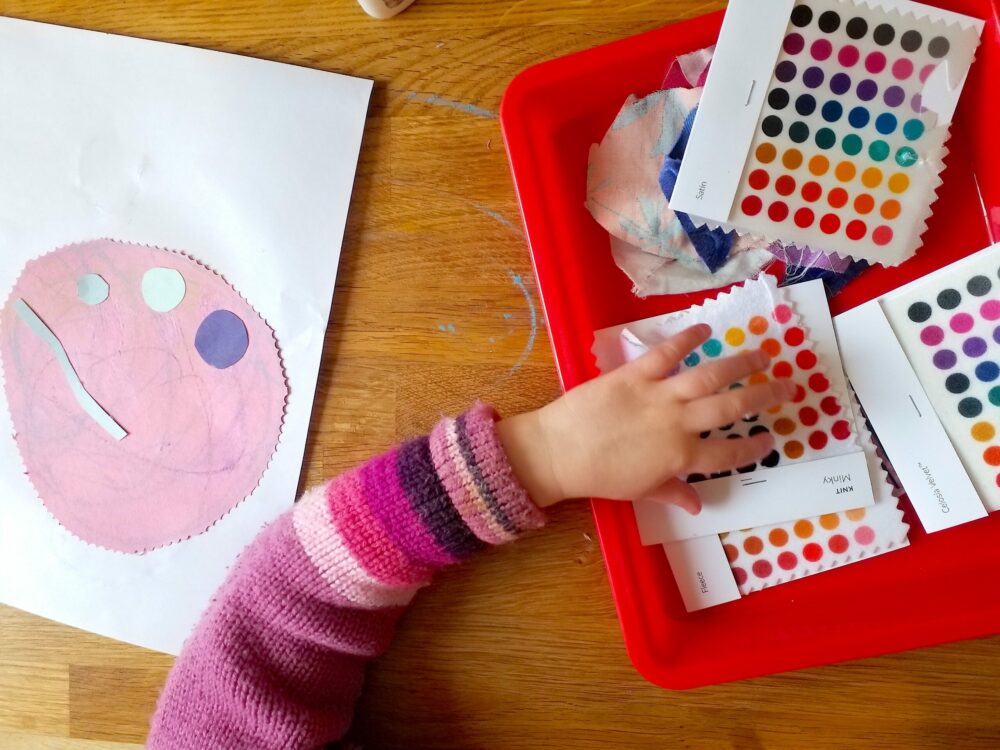
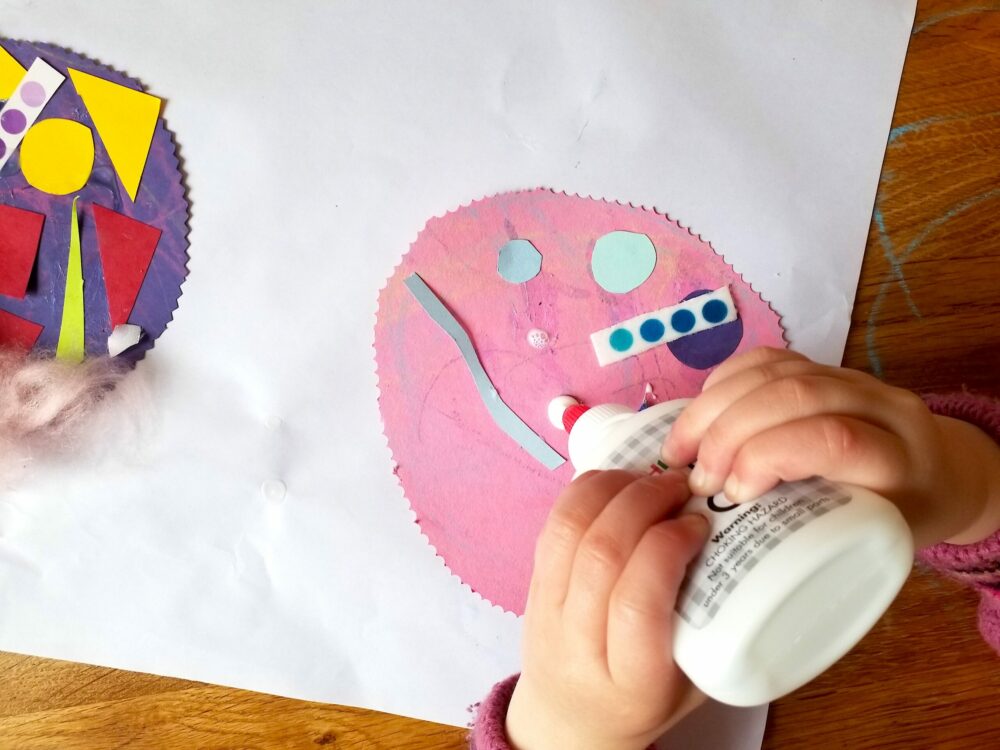
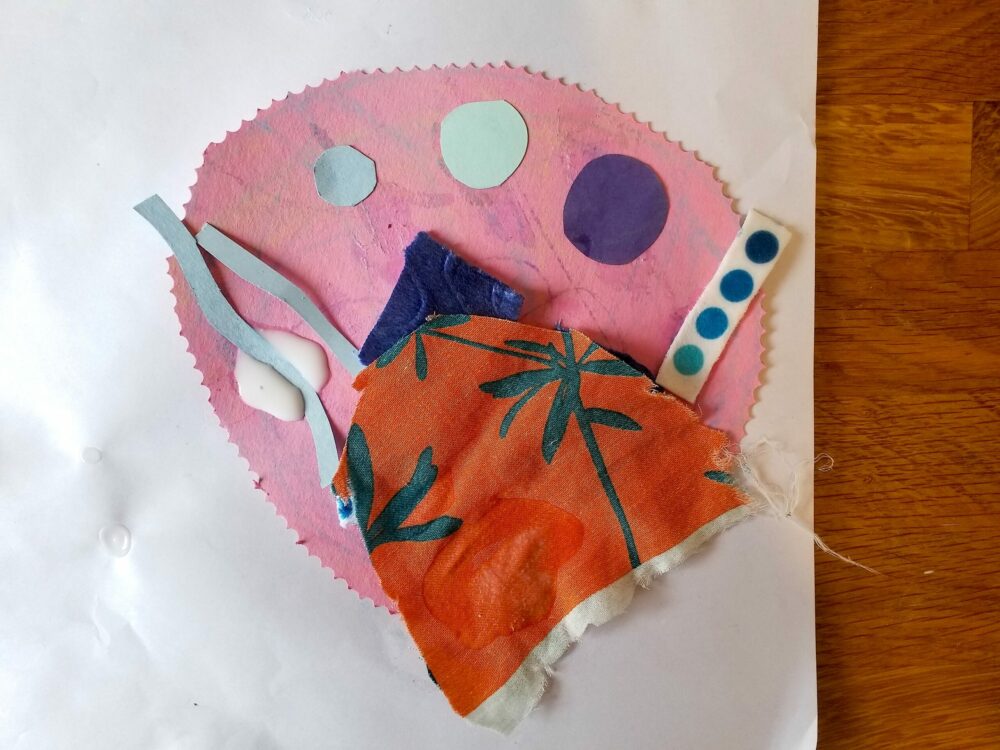
To compare them, we stuck Calm Cat next to Angry Cat on the A3 paper.
To extend the learning, children can draw to express their own emotions. This can be figurative or abstract. When drawing people or animals, my daughter likes to tell me what her characters are feeling. If she is feeling angry or sad, it helps her to calm down if she draws herself feeling that emotion. If she’s feeling particularly angry, she likes to draw angry marks in a more abstract and expressive way and then rip up the paper! She now identifies with the cat characters and can tell me whether she is an Angry Cat or a Calm Cat.

